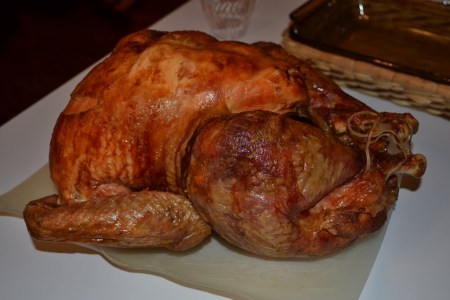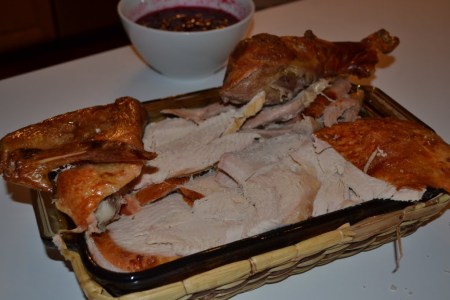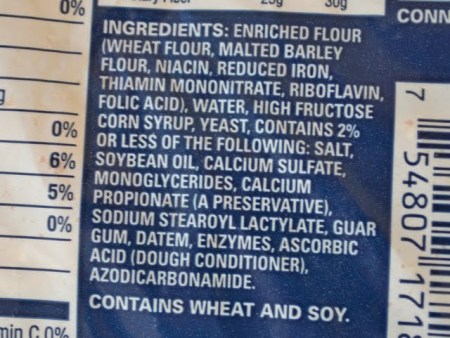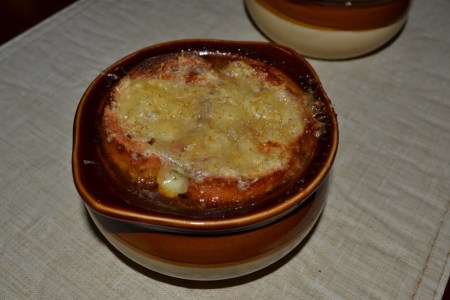After my French dinner party was cancelled by the snow storm a few weeks ago, then spending 6 days without power, and weeks of heavy labor cleaning in the storm’s aftermath, I decided to relax this past weekend. I took the opportunity to make the recipe that I’ve most wanted to make over the past two years: Julia Child’s Boeuf Bourguignon. No ingredient substitutions, nothing frozen, cooked exactly according to Julia Child’s instructions in “Mastering the Art of French Cooking”. The results were a spectacular 5-stars.

My greatest meal in 2011
This recipe required more work; both in terms of cooking and cleanup; than any other recipe I’ve made. I washed some pans three times during the 6 hour cooking process, and as I brought the meal to the table, I found myself out of breath from all the last minute running around. Exhausting, but the spectacular results were worth the effort. Julia Child had truly created a culinary masterpiece; better than Chris Kimball’s, and better I was able to buy in Paris. Très magnifique.
Comments:
- While my goal was to make this without a single substitution, I couldn’t fund chunk bacon, so I used salt pork. By the time I blanched the bacon it probably wouldn’t have tasted any different. Plus if I used thick sliced bacon, then I wouldn’t have had the rind.
- The last 30 minutes were crazy as I brought all the parts together, and in the chaos I forgot to garnish with chopped parsley; my only mistake.
- I used my 7-quart dutch oven, because I don’t have a casserole pan.
- Be sure to choose and begin your side dish of boiled potatoes, mashed potatoes, buttered egg noodles or rice; start boiling the water as you begin to braise the boiler onions.
Rating: 5-stars.
Cost: $30.
How much work? High Effort.
How big of a mess? Huge Mess.
Started: 12:00 pm Ready: 6:00 pm.
You can see a version of Julia Child’s original recipe here. The descriptions of how I cooked it today are given below. I separated the recipe into sections so that I wouldn’t have to scroll so much while preparing the recipe.
Making the Stew:
6-oz piece of chunk bacon
1 tablespoons olive oil
3 pounds lean stewing beef, cut into 2-inch cubes
1 carrot, sliced into 1/2″ wheels.
1 onion, sliced against the grain.
Salt and pepper
2 tablespoons flour
1 bottle red wine, young and full-bodied (like Beaujolais, Cotes du Rhone or Burgundy)
2 to 3 cups brown beef stock
1 tablespoon tomato paste
2 cloves mashed garlic
1/2 teaspoon thyme
A crumbled bay leaf
- Cut the bacon rind away from the meat, then cut the bacon meat into lardons (sticks 1/4″ thick and 1-1/2″ long).
- Blanch the bacon by bring 1-1/2 quarts water to a boil. Reduce the heat and simmer the bacon rind and lardons for 10 minutes. Remove with a slotted spoon, set bacon rind aside separately, discard the blanching liquid, then dry lardons with paper towels.
- Sauté lardons in 1 tablespoon of the olive oil in a flameproof casserole over moderate heat for 2 to 3 minutes until lightly browned. Remove to a side dish with a slotted spoon.
- Preheat oven to 450-degrees.
- Cut beef into 2″ cubes then pat dry using paper towels; they will not brown if damp. Heat leftover bacon fat in casserole until almost smoking. Add up to four beef cubes at a time. Sauté until nicely browned on all six sides, then remove and let rest with the lardons. It will take 4 to 5 batches, between 8 to 10 minutes per batch.
- In the same fat, saute the sliced onions and carrots until slightly browned for about 5 minutes. Pour out any excess fat; of which I had none.
- Return the beef and bacon to the casserole and toss with 1/2 teaspoon salt and 1/4 teaspoon pepper.
- Evenly sprinkle 2 tablespoons of flour and toss again to coat the beef lightly. Set casserole uncovered in middle position of preheated oven for 4 minutes.
- Toss the meat again and return to oven for 4 minutes (this will brown the flour and give the meat a light crust).
- Remove casserole from oven and reduce temperature to 325-degrees.
- Stir in the bottle of red wine, and 2 to 3 cups beef stock; enough to barely submerge the meat.
- Add the 1 tablespoon tomato paste, 2 mashed garlic cloves, 1/2 teaspoon thyme, 1 crumbled bay leaf, and the bacon rind. Bring to a simmer on top of the stove.
- Cover casserole and set in lower third of oven. Regulate heat so that liquid simmers very slowly for 3 hours. The meat is done when a fork pierces it easily.
Brown Braising the Onions:
18 to 24 small, white, boiler onions
3-1/2 tablespoons butter
1-1/2 tablespoons of olive oil
1/2 cup beef stock
Herb bouquet (4 parsley sprigs, one-half bay leaf, one-quarter teaspoon thyme, tied in cheesecloth)
1 pound mushrooms, fresh and quartered
- About an hour before the meat is done, begin preparing the onions and mushrooms. Assemble you herb bouquet, by adding 4 parsley sprigs, 1/2 bay leaf, 1/4 teaspoon thyme in a small square of cheesecloth and tying with kitchen twine.
- Also, begin to heat your water for the accompaniment: potatoes, egg noodles or rice.
- Heat 1-1/2 tablespoons butter with 1-1/2 tablespoons of olive oil until bubbling in a skillet.
- Add boiler onions and sauté over moderate heat for about 10 minutes, rolling them so they will brown as evenly as possible. Be careful not to break their skins. They will not brown uniformly.
- Add 1/2-cup of beef stock, the herb bouquet, and salt and pepper to taste.
- Cover and simmer slowly for 40 to 50 minutes; swirling occasionally; until the onions are very tender but still hold their shape, and the liquid has evaporated. Discard the herb bouquet and set cooked onions aside.
- Wipe out skillet and heat 2 tablespoons of butter and 1 tablespoon olive oil over high heat. Once the bubbling begins to subside add the quartered mushrooms. Toss and swirl pan for 4 to 5 minutes. Remove from heat once they have begun to brown lightly.
Final assembly:
- After 3 to 4 hours in the oven you beef should be very tender. Pour the contents of the casserole into a sieve set over a saucepan. Wipe out the casserole and return the beef and lardons to it, then distribute the cooked onions and mushrooms on top. Discard the spent carrots and whatever else is left in your sieve.
- Use a wide, shallow spoon to skim fat off sauce in saucepan. Simmer sauce for 1 to 2 minutes, again skimming off additional fat as it rises. You should have about 2-1/2 cups of sauce; about the consistency of heavy cream. If too thin, boil it down rapidly. If too thick, mix in a few tablespoons stock. Taste carefully for seasoning and adjust salt and pepper according to taste.
- Pour sauce over meat and vegetables. Cover and simmer 2 to 3 minutes, basting the meat and vegetables with the sauce several times.
- Serve directly in casserole, or arrange stew on a platter surrounded with boiled or mashed potatoes, buttered noodles or rice. You can also decorate with parsley.





 Posted by My Year With Chris Kimball
Posted by My Year With Chris Kimball 












